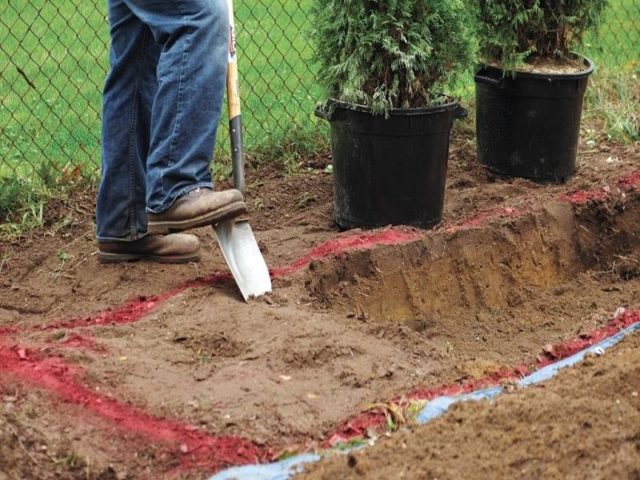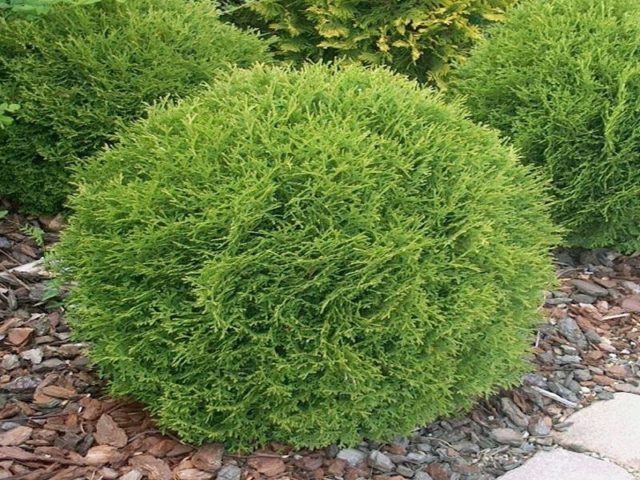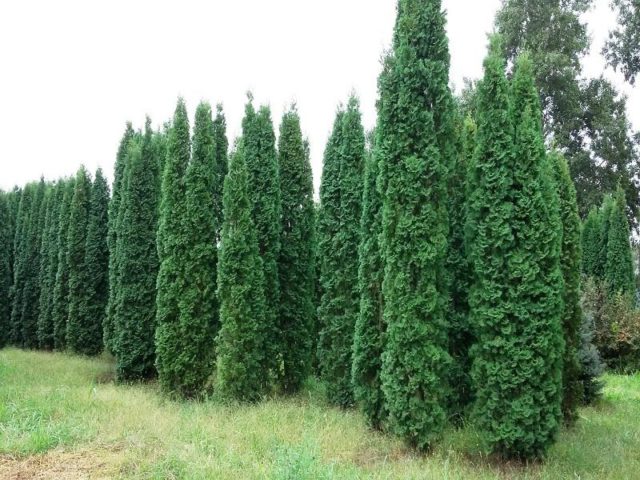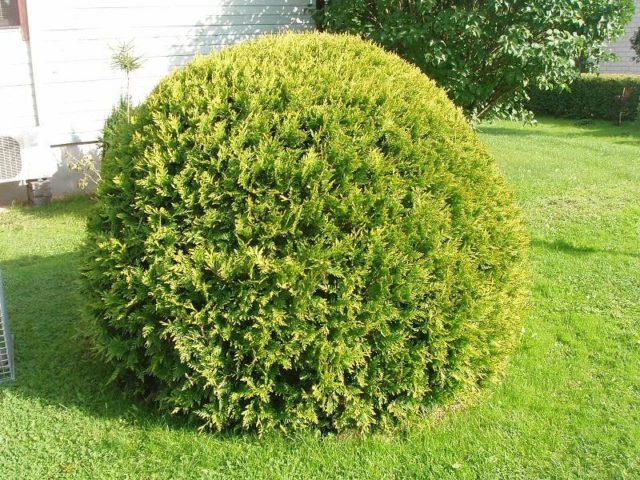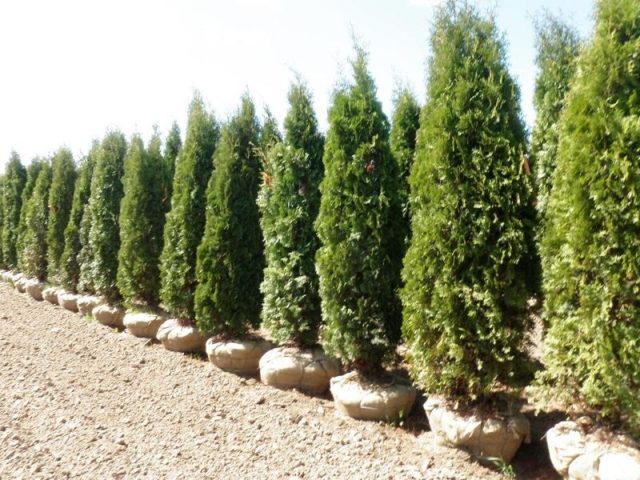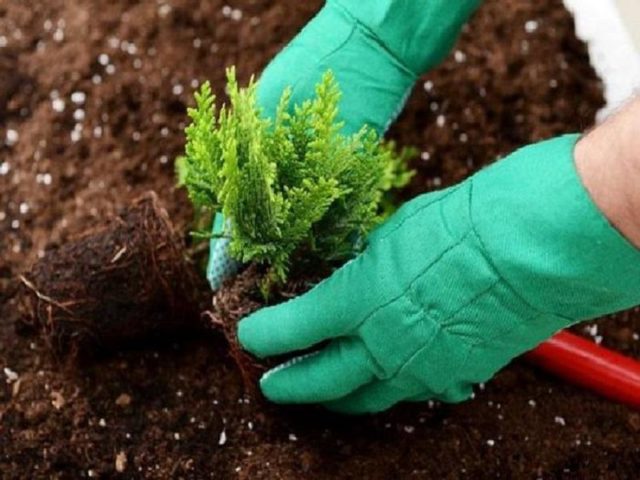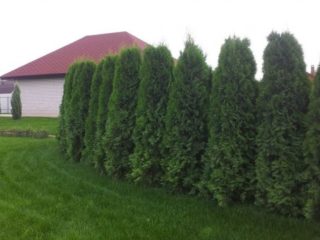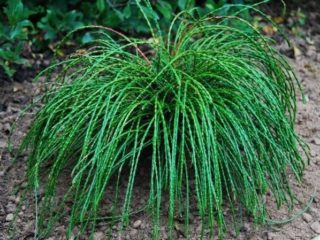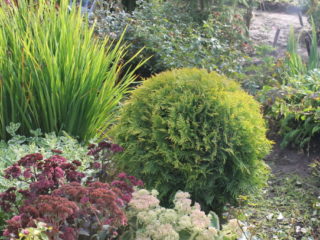Content
In regions with harsh climatic conditions, more and more gardeners are choosing thuja as their landscaping. Agronomists brought it to the eastern part of Russia in the middle of the last century and managed to grow it. It is worth knowing how planting and caring for thuja in Siberia is carried out (photo), which varieties are the most frost-resistant, how to carry out care so that the plant successfully takes root, grows and develops over many decades.
Today, thuja hedges and individual plantings of conifers are far from uncommon in the Urals and Siberia. The plant is developing new regions, for which this beautiful tree has recently been a real exotic.
Does thuja grow in Siberia
It is believed that the homeland of thuja is the North American forests, their southern part. But there are species that are capable of growing in the north of the United States and Canada. There they can even be found on swampy, damp and cold soils. It was from such climatic conditions that the seedlings brought to Siberia were taken.
The western species of thuja is well accustomed to harsh climatic conditions, it is able to endure severe frosts, long winters, deeply freezing soil.
The average lifespan of a plant is 150 years, it is undemanding to the soil, it tolerates pruning well. But when grown in Siberia, it is worthwhile to carefully select a place for planting, enrich the poor soil and monitor the moisture content of the soil.
The use of the plant is universal: as a hedge, in separate plantings.
Thuja varieties growing in Siberia can look like trees up to 20 m high or shrubs. The form is varied - pyramidal, conical, columnar, ovoid. The bark is red or brown, later brightens. The needles in the summer are green, in the winter they turn a little yellow. Its complete change occurs in three years, falling together with small branches.
Frost-resistant varieties of thuja for Siberia
Western thuja is the most unpretentious of all existing species. Several hardy varieties are most popular in Siberia.
Emerald
Evergreen thuja with a dense pyramidal crown, bright green needles. Plant height - 6 m, width without pruning - 2 m. Annual growth is about 20 cm in height and 5 cm in width. The crown is very malleable for giving interesting shapes with a haircut.
In the spring, flowers appear on the branches - small cones, later falling off. In Siberia, there are thuja varieties Smaragd with two types of color - green and golden.
Hoseri
A dwarf variety of western thuja of the original shape in the form of a ball. It has scaly needles of a dark green color. The variety is winter-hardy, wind-resistant, sensitive to drought. In Siberia, it grows well on fertile loams, easily tolerates a haircut. The crown diameter is about 1 m, it grows slowly.
Brabant
Western thuja is columnar in shape with a compact and branched crown. The maximum height in Siberia is 4 m. It is hygrophilous. Poorly tolerates short-term thaws, which can cause premature sap flow.
Thuja can grow in both sunny and shaded areas. The crop requires constant pruning to keep it in good shape.In the harsh conditions of Siberia, the use of ephedra is universal.
Danica
A dwarf thuja variety capable of growing in the harsh climatic conditions of Siberia. It belongs to one of the most decorative. It grows slowly, only 5 cm per year. In adulthood, it reaches 60 cm in height.
This thuja has a dense, spherical crown, reddish bark, soft, scaly needles. The root system of the plant is superficial. The culture is undemanding to soil fertility and moisture.
Fastigiata
Thuja has a crown in the form of a column, its shoots are pressed to the trunk, the needles are emerald, fluffy. In Siberia, it grows up to 6 m in height.
The annual growth is about 30 cm. In the winter, the color of the needles does not change, the haircut is easily tolerated. Ephedra cones are brown, very small. The culture is frost-resistant, undemanding to the soil.
Clot of Gold
Thuja has the shape of a bush with a height of 2 m, a width of 1.5 m. The shape of the crown is an ellipse or cone. Needles are needle-like, delicate, lemon or copper shades.
Grows well in drained alkaline soil. Prefers sunny or slightly shaded areas.
Thuja planting in Siberia and subsequent care
In order to grow thuja in the harsh climatic conditions of Siberia, a number of conditions must be met:
- to purchase a seedling that is distinguished by its vitality, frost resistance, the ability to withstand strong cold winds and snowfalls;
- comply with the landing dates;
- choose the right place for plants;
- dig holes the size of which corresponds to the size of the root system of the seedlings;
- land according to the algorithm;
- fully care after planting thuja in open ground.
Recommended timing
It is best to plant thuja in spring or autumn. For Siberia, the most preferred time is early spring, immediately after the snow melts. A few months before the onset of winter, the plant has time to take root, build up coniferous mass and after that successfully overwinter.
After the autumn planting, the thuja should be covered very carefully for the winter. The event is more successful if a seedling with a closed root system is purchased. The best time to plant in autumn: late August-early September.
Site selection and soil preparation
For thuja growing in Siberia, a place illuminated by the sun is suitable, and the time is only in the morning and in the evening. With constant exposure to direct sunlight, its needles lose moisture and become less decorative. You should not choose a place that is accessible to northern winds and drafts.
Thuja is unpretentious, prefers light drained soils, but is able to grow on soils with high water occurrence. Before planting, it is necessary to prepare a soil mixture and enrich it with organic and mineral fertilizers, and make drainage in the planting pit.
Landing algorithm
After choosing a seedling and a location, planting in Siberia is carried out according to the algorithm:
- For a three-year-old thuja, dig a hole 50 cm long, 90 cm wide and 70 cm deep.
- Broken brick or expanded clay is laid at the bottom in a layer 20 cm thick - to create drainage.
- The prepared soil is poured with a cone on the drainage layer - for a seedling with an open root system and an even layer - for a closed one.
- The plant is placed in the center of the planting pit.
- The voids are covered with prepared soil mixture.
- The root neck of the thuja should be located above the soil level.
- The plant is watered abundantly.
- Sprinkle the soil if it is a donkey.
- The tree trunk circle of thuja is mulched with peat, grass.
The composition of the soil mixture includes sod land, sand, humus and peat, mixed in a ratio of 3: 1: 2: 2. It is permissible to use special mineral fertilizers for conifers.
Growing thuja in Siberia
After planting the thuja, she needs to provide full care:
- carry out regular watering, irrigation;
- remove weeds, mulch the soil;
- periodically apply top dressing;
- regularly trim the crown;
- carefully prepare for wintering.
Watering and feeding schedule
Thuja belongs to drought-resistant, but, at the same time, moisture-loving plants. At first, after planting, watering is carried out in the morning and evening. When the first signs of rooting and growth appear, the plant is moistened once a week in a volume of 10 liters for one plant. At the same time, the climatic conditions of Siberia should be taken into account, making the necessary adjustments to the irrigation schedule.
An adult plant needs at least 30 liters of water every 2 weeks. Over the age of 5, it is watered only in intense heat.
Any thuja should be subjected to periodic sprinkling, which is carried out early in the morning or late in the evening, excluding very cold weather, which often happens in Siberia. Thanks to this procedure, dust and dirt are washed off the needles, the pores open, the air is saturated with essential vapors.
In dry autumn, abundant watering should be carried out to prepare the plant for winter.
To carry out full-fledged care for thuja in Siberia, it needs top dressing. Their quantity and quality depend on the soil on which thuja grows.
Loosening and mulching of the soil
Some time after watering, the soil under the thuja crown is carefully loosened to a depth of no more than 7 cm. Such care is required in order not to damage the roots that have a superficial location. After loosening, to protect the thuja from weeds and preserve moisture in the soil, the trunk circle is mulched. In Siberia, compost, sawdust of coniferous trees, peat, and pine bark are used as mulch. In addition to retaining moisture, mulching contributes to the enrichment of the soil with nutrients.
Pruning rules
Thuja pruning begins in early spring and is then carried out in summer and autumn. The exact time depends on the weather conditions in Siberia. It is undesirable to carry out the event in rainy weather, when there is a maximum amount of pathogenic microbes in the air. Since the plant has open wounds after pruning, harmful microorganisms can easily get there.
It is imperative to carry out sanitary pruning, during which damaged, sick, dead thuja shoots are removed.
The crown is thinned out so that the plant feels more comfortable in the heat. The best time for the procedure is May.
The rules for any haircut are pretty simple:
- branches should not be cut too short, the norm is within a two-year growth;
- in order not to stress the plants, the haircut is carried out regularly and little by little;
- the natural shape of the thuja crown should be taken into account;
- tools must be clean and well sharpened;
- the formation of voids in the crown should not be allowed.
Preparing thuja for winter in Siberia
Young seedlings of the first year of planting require reliable shelter and protection from frost in Siberia.
The danger to plants lies not only in abnormally low temperatures, but also in the possibility of burning needles, since there is no sap flow in winter, and thuja lacks moisture.
To protect the plants, they are tied with twine in a circle and covered with light-colored non-woven material that reflects sunlight and allows air to pass through.
To protect the roots, even before the first frost, weeds are removed and the mulch layer is increased to 25 cm using compost and leaves. To enhance the protection of thuja in Siberia, spruce branches are additionally thrown on top.
For shelters, it is convenient to use special wooden frames, on which the material is pulled - burlap, gauze.
Pests and diseases
In case of violation of agricultural technology and adverse weather conditions, thuja in Siberia can be affected by diseases:
- late blight - an infection that first affects the roots of the plant, and then the crown, which as a result withers, and the trunk of the ephedra becomes soft;
- brown shoots - first brown scales appear, and then all shoots turn yellow;
- rust and shute - falling and darkening of the needles (most often on young thujas).
For the treatment of plants, spraying with foundation is used, removal and destruction of affected shoots.
Among the most dangerous pests of thuja in Siberia are thuja aphids and false shields. They are destroyed with karbofos, decis and other insecticidal preparations.
Conclusion
It is worth noting that planting and caring for thuja in Siberia (photo) is not much different from this process in central Russia.
Due to the peculiarities of the climate, some dates are shifted, preparation for winter is carried out more carefully. Subject to all the rules of planting and leaving, thuja perfectly takes root and develops in the harsh weather conditions of Siberia.
